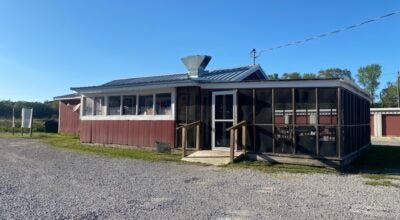Crop season comes to end
Published 9:48 pm Tuesday, December 2, 2008
Alabama rainfall was very scarce throughout the state as opposed to the previous week. As a result from the lack of rainfall, soil moisture had a slight decline from the previous week.
Weather conditions allowed productive fieldwork, especially in Districts 30, 40, 50 and 60 with seven suitable days. The only weather station that reported rainfall was Thomasville with a total of 0.02” for the Coastal Plain area.
Daytime highs ranged from 57 degrees in Belle Mina to 73 degrees in Mobile Bates. Overnight temperatures reached as low as 14 degrees as indicated by four weather stations from northwest to north central Alabama. Dothan recorded the warmest overnight temperature at 31 degrees.
Small grains
Winter wheat seeding continues to progress at a moderate pace with 69 percent of growers planting winter wheat. This was an improvement of 15 percent from the previous week. Crop emergence also increased by 15 percent of the previous week to 42 percent. The areas of progression were generally based around the north Alabama regions.
Cotton/peanuts/soybeans
Autauga County Extension Agent Leonard Kuykendall said cotton harvest was near completion and growers were preparing to begin planting small grains. Dan Porch, Blount County Extension coordinator, said most of the crops across the area were harvested with the exception of soybeans.
Vegetables/fruit
Commercial Horticulture Region Extension Agent Doug Chapman said most nurserymen have completed covering greenhouses for over-wintering container plants. Strawberry growers were in good condition and plants appear to be doing well. Winter cover crops were looking superior and soil moisture was adequate. Chapman added that there were no major insect or disease problems detected.
The Alabama peach orchards have indicated that there were two major scale insects that growers need to be mindful. The most common was White Peach scale recognized by white scale covering secreted by the male giving a wooly or cottony appearance on the limb surface.
The other scale insect was the San Jose scale that can cause freckling on the fruit, which are small, reddish, circular areas. San Jose, being more difficult to detect, may cause tree limbs to die or infect the fruit.
Pasture/hay/livestock
Henry Dorough, Talladega County Regional Extension agent, said lack of rain was showing on winter pastures. Hay was being fed earlier due to lack of adequate pasture. Porch indicated that cattle and forage producers need a good rainfall event. Very dry conditions exist across the area, which hampered fall forage production and growth of over-seeded pastures and hampered planting cover crops on conventional fields.






